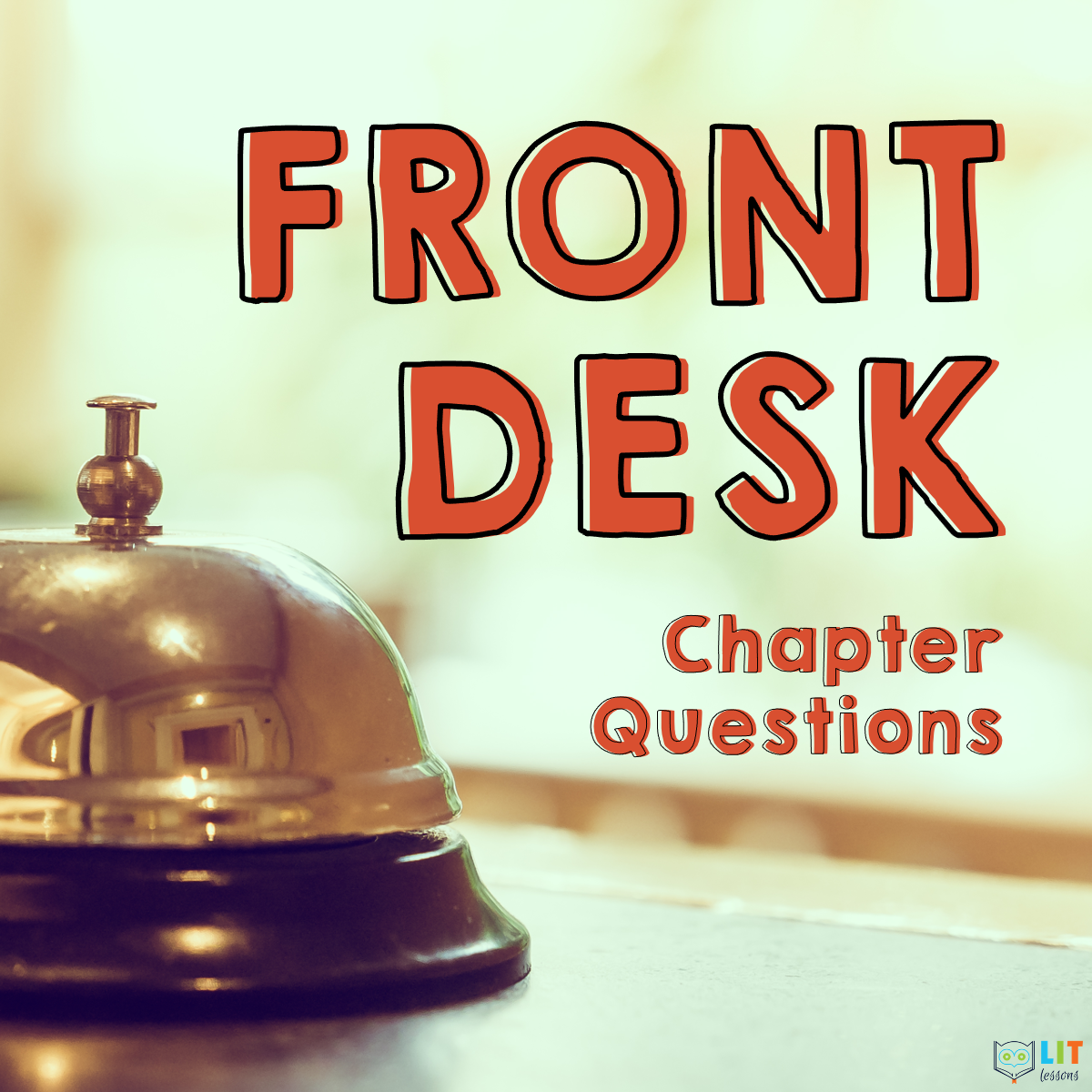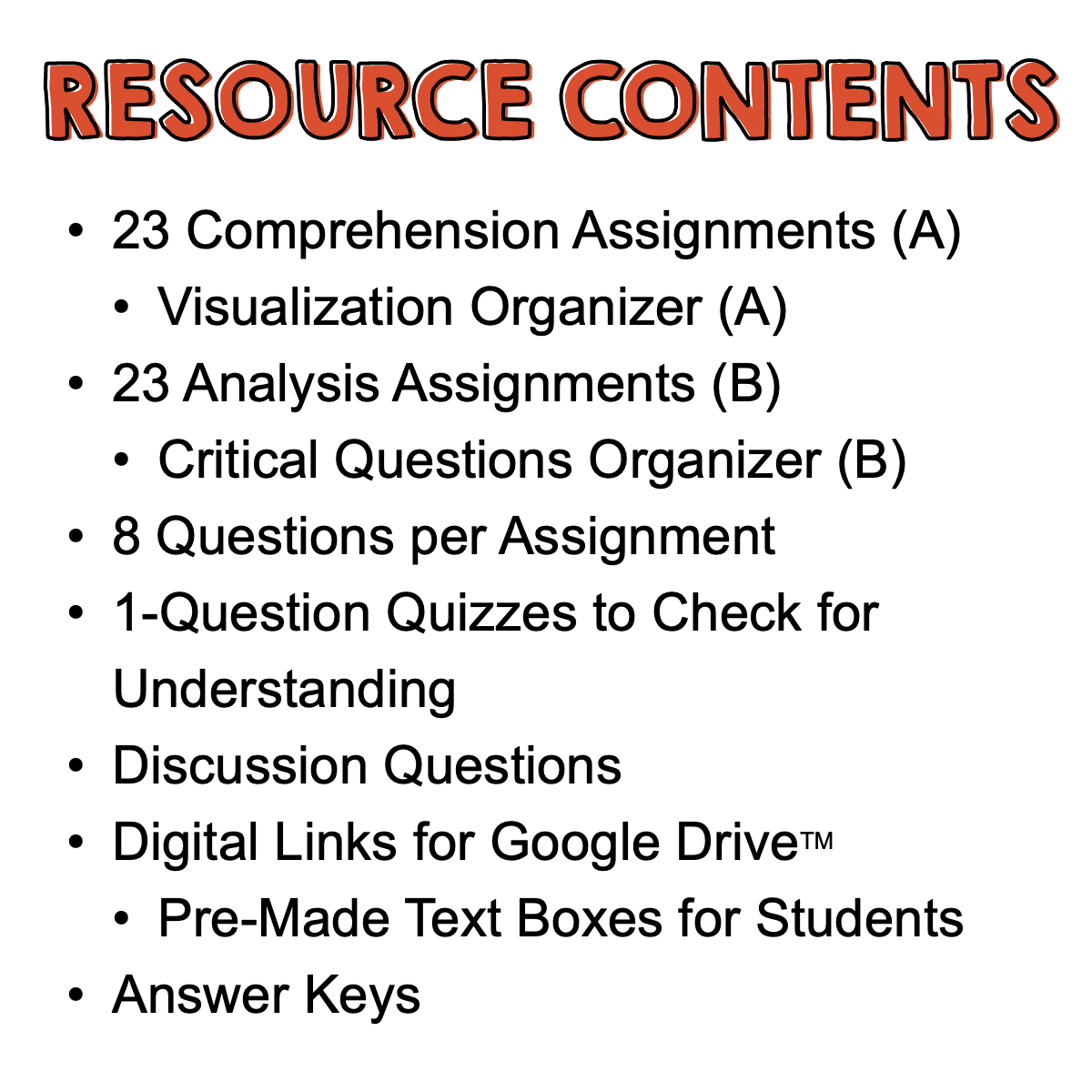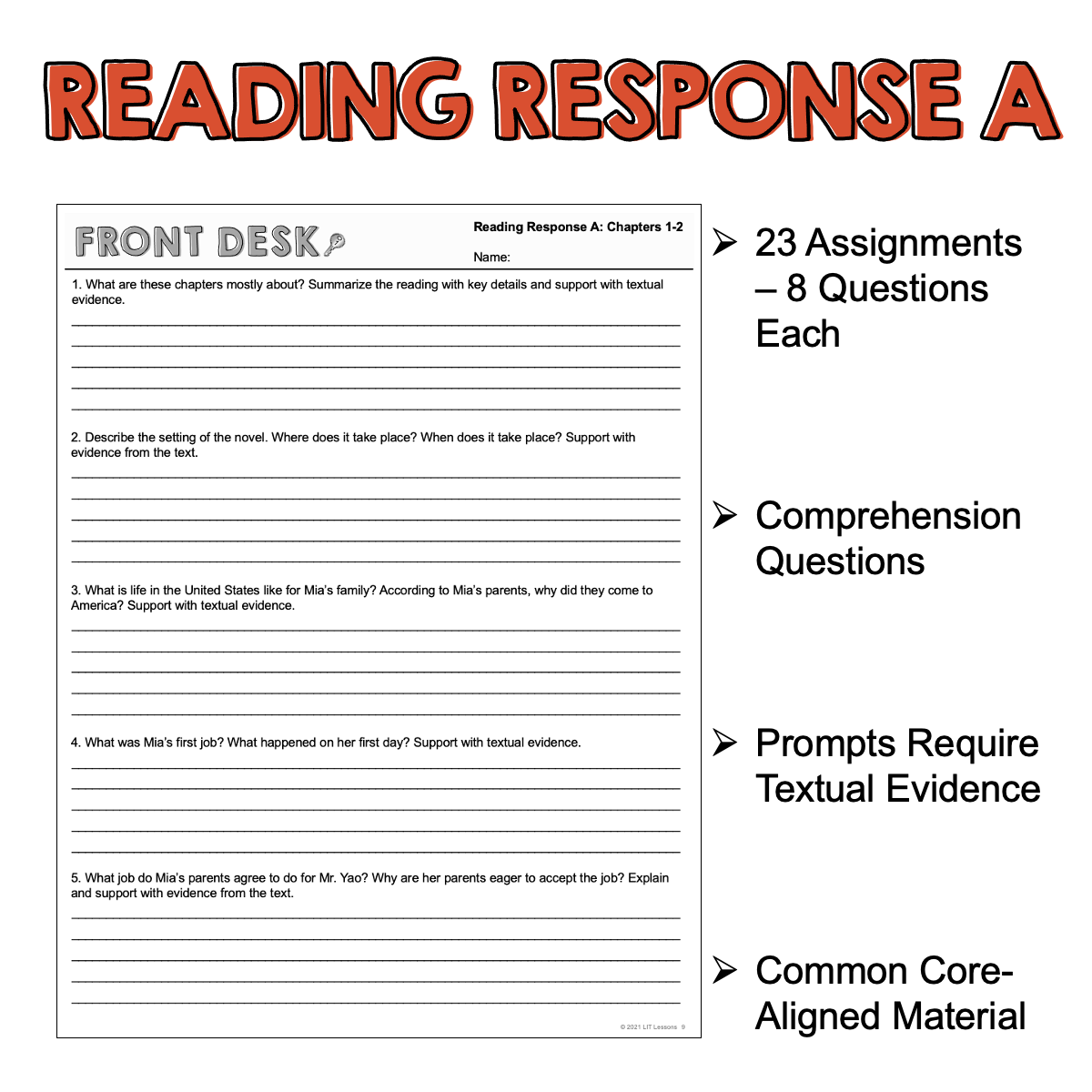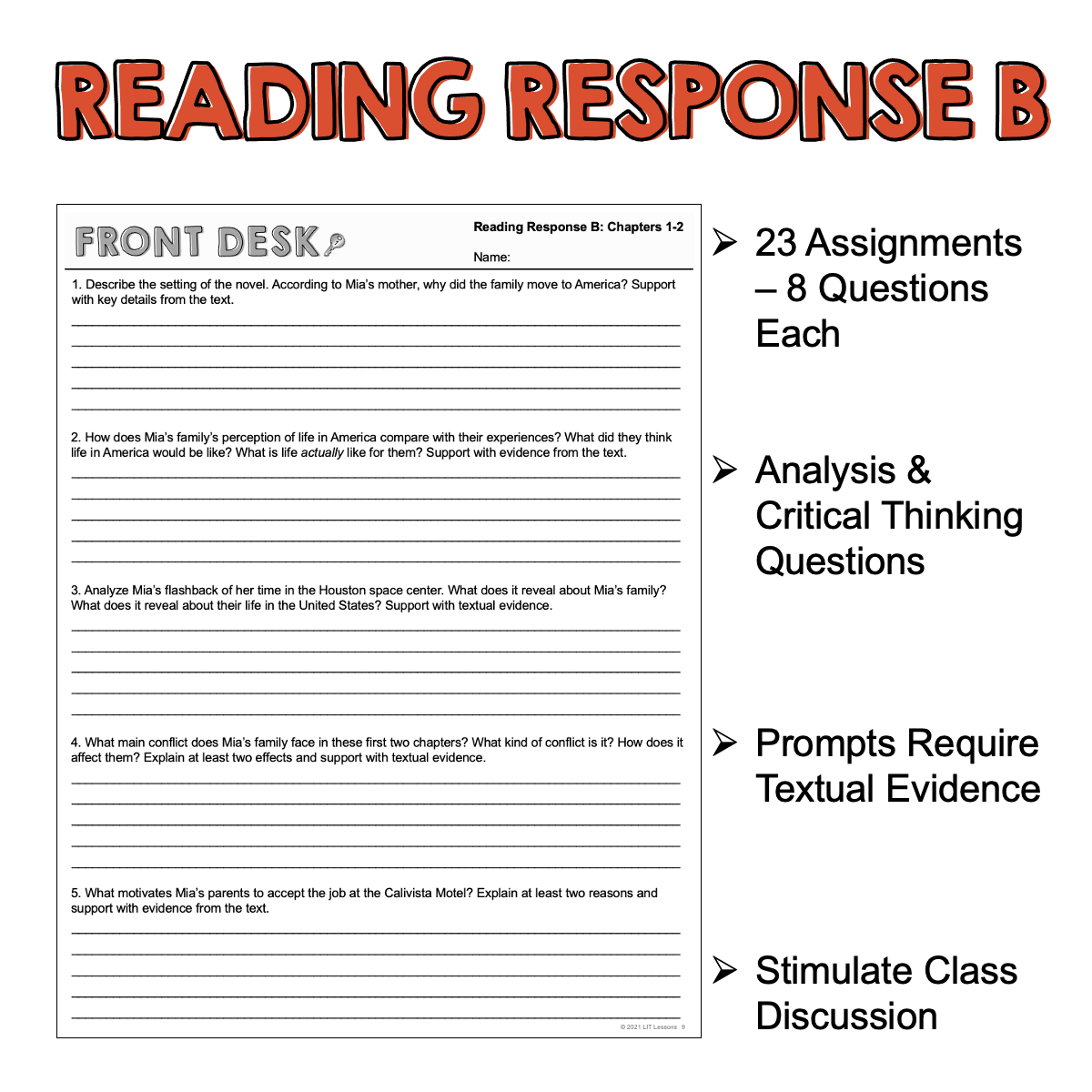Front Desk Chapter Questions
You can only add to a wishlist if you have an account, please register now.
Create an Account$10
Front Desk Chapter Questions – Snapshot of Included Resources:
- 23 Comprehension Assignments (A)
- Visualization Organizer (A)
- 23 Analysis Assignments (B)
- Critical Questions Organizer (B)
- 8 Questions per Assignment
- 1-Question Quizzes to Check for Understanding
- Discussion Questions
- Digital Links for Google Slides™
- Pre-Made Text Boxes for Students
- Answer Keys
-
Identifying main idea and support using details from the text
-
Identifying and analyzing how elements of a story interact
-
Identify and analyze conflict and types of conflict
-
Analyze character and make inferences about character motivation
-
Identify themes of the text and explain the lesson learned
-
Identify and analyze point of view
-
Make inferences based on textual evidence
-
Analyze tone and determine the meaning of words, phrases, and figurative language
- ZIP file (PDFs and Word Docs for Digital Links)
- Non-Editable (Writing Resources Editable)
- 8.82 MB
- 144 Pages
- Links for Student Pages in Google Slides™ & Google Forms™
- This downloadable resource supplies one single-teacher license for use in your classroom.
- Photocopying of this product is allowed only for the classroom use of the purchaser.
- Replication of this product, in whole or in part, for commercial sale or broader distribution is strictly prohibited.
- This product also may NOT be shared electronically, digitally, or otherwise in a manner that violates the Terms of Use detailed by LIT Lessons.
- For explicit information on permissions, please see the Terms of Use document included with this resource. Thank you for your cooperation and understanding.
Front Desk Chapter Questions – Snapshot of Included Resources:
- 23 Comprehension Assignments (A)
- Visualization Organizer (A)
- 23 Analysis Assignments (B)
- Critical Questions Organizer (B)
- 8 Questions per Assignment
- 1-Question Quizzes to Check for Understanding
- Discussion Questions
- Digital Links for Google Slides™
- Pre-Made Text Boxes for Students
- Answer Keys
-
Identifying main idea and support using details from the text
-
Identifying and analyzing how elements of a story interact
-
Identify and analyze conflict and types of conflict
-
Analyze character and make inferences about character motivation
-
Identify themes of the text and explain the lesson learned
-
Identify and analyze point of view
-
Make inferences based on textual evidence
-
Analyze tone and determine the meaning of words, phrases, and figurative language
- ZIP file (PDFs and Word Docs for Digital Links)
- Non-Editable (Writing Resources Editable)
- 8.82 MB
- 144 Pages
- Links for Student Pages in Google Slides™ & Google Forms™
- This downloadable resource supplies one single-teacher license for use in your classroom.
- Photocopying of this product is allowed only for the classroom use of the purchaser.
- Replication of this product, in whole or in part, for commercial sale or broader distribution is strictly prohibited.
- This product also may NOT be shared electronically, digitally, or otherwise in a manner that violates the Terms of Use detailed by LIT Lessons.
- For explicit information on permissions, please see the Terms of Use document included with this resource. Thank you for your cooperation and understanding.



More Front Desk Resources...
Front Desk Novel Study
The Front Desk Novel Study is a comprehensive set of standards-aligned instructional materials for teaching Front Desk by Kelly Yang. With over 100+ materials, students will deeply engage with the novel and develop their literacy skills. The close reading activities, literary analysis resources, pre-reading resources, vocabulary, assessments, and argumentative writing resources all provide opportunities for your students to practice and apply what will be their growing understanding of the novel. They also provide numerous ways for you to DIFFERENTIATE learning for your students, allowing you to choose the assignments that best support your students’ learning while being conducive to any classroom model.
Front Desk Close Readings
The 23 close reading lessons explicitly focus on critical Common Core State Standards to develop students’ literacy proficiency. Using Front Desk as the foundational text for close reading, each lesson focuses on a particular skill, such as setting, conflict, tone, and plot, and provides students an opportunity to develop and demonstrate their ability to perform that skill. Each assignment also requires students to use textual evidence to support their claims. The resources could supply homework, facilitate guided reading groups, or stimulate whole class literacy discussions for each chapter grouping. You can choose the purpose that best suits your students and your classroom.
Front Desk Assessments
The standards-aligned assessments will help you measure your students’ comprehension of Front Desk and their ability to apply the literary skills taught throughout the unit. The materials include 23 reading checks, 3 novel quizzes, 1 final differentiated test, and an essay choice board.
Front Desk Pre-Reading Resources
The Front Desk pre-reading resources will build your students’ understanding of the history of Chinese immigration to the United States, a topic that shapes the novel. By developing an understanding of this history, students will be able to engage with the themes of Front Desk in a thoughtful way. Instead of learning the characters’ experiences as isolated incidences, they will build their capacity to see these events on a continuum of history that continues to shape and influence society today. The resource includes 5 nonfiction readings, 3 activities, and an anticipation guide.
Front Desk Argumentative Writing Resources
The Front Desk writing resources teaches students argumentative writing through 14 mini-lessons, an essay assignment, and a final project. Each element of an argumentative essay is broken down and modeled before providing students the opportunity to draft their own example. With mini-lessons on thesis statements, topic sentences, conclusions and more, the resources provide a comprehensive resource for teaching this type of essay.
Front Desk Vocabulary
The vocabulary resources will engage students in varied activities to expand their vocabulary. The resources include materials to help teach challenging vocabulary words in Front Desk that will then build your students’ vocabulary. With 4 vocabulary lists of 10 words each and a crossword puzzle, practice assignment, and quiz for each set, the materials provide opportunities for differentiation to suit the needs of the classroom.
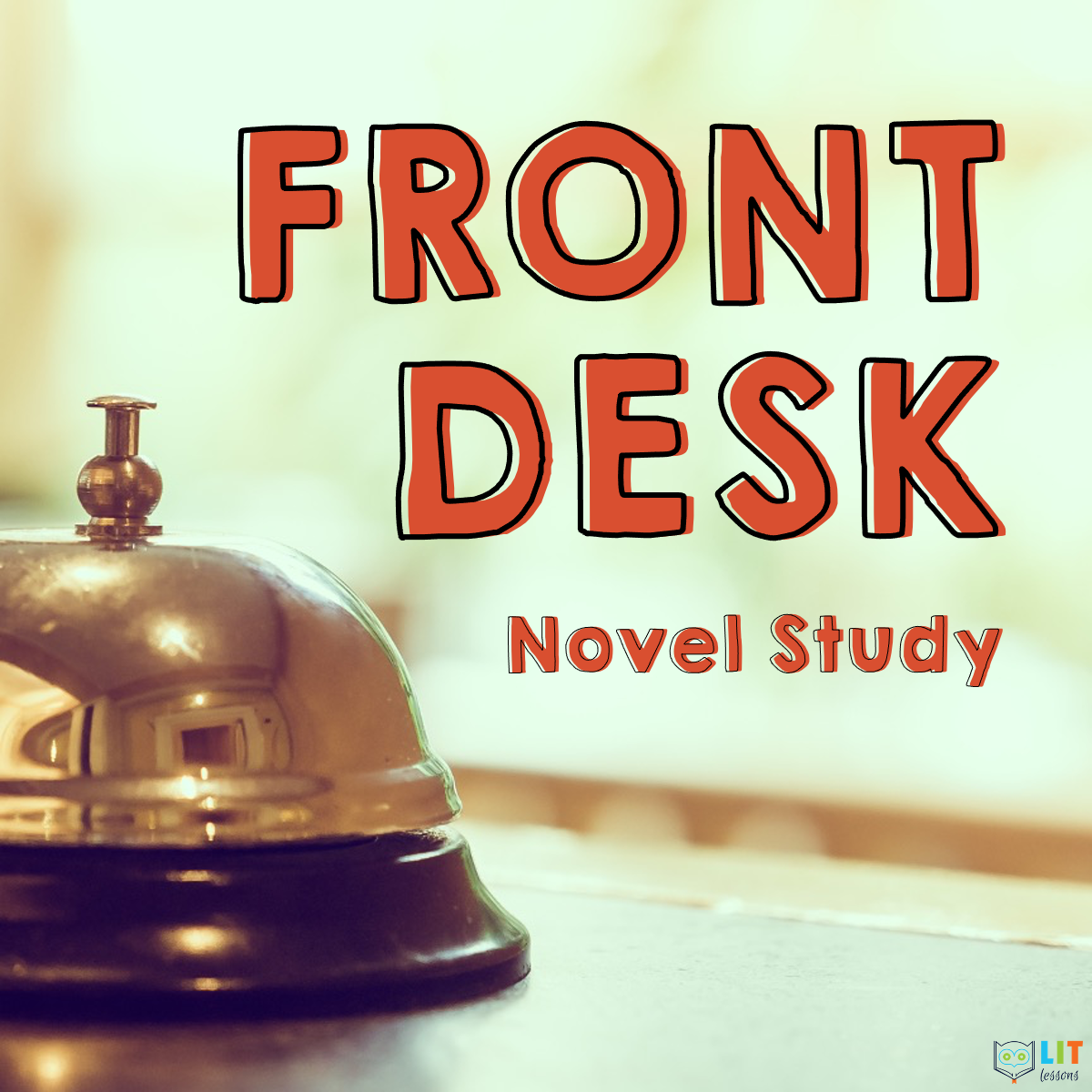
Front Desk Novel Study
The Front Desk Novel Study is a comprehensive set of standards-aligned instructional materials for teaching Front Desk by Kelly Yang. With over 100+ materials, students will deeply engage with the novel and develop their literacy skills. The close reading activities, literary analysis resources, pre-reading resources, vocabulary, assessments, and argumentative writing resources all provide opportunities for your students to practice and apply what will be their growing understanding of the novel. They also provide numerous ways for you to DIFFERENTIATE learning for your students, allowing you to choose the assignments that best support your students’ learning while being conducive to any classroom model.

Front Desk Close Readings
The 23 close reading lessons explicitly focus on critical Common Core State Standards to develop students’ literacy proficiency. Using Front Desk as the foundational text for close reading, each lesson focuses on a particular skill, such as setting, conflict, tone, and plot, and provides students an opportunity to develop and demonstrate their ability to perform that skill. Each assignment also requires students to use textual evidence to support their claims. The resources could supply homework, facilitate guided reading groups, or stimulate whole class literacy discussions for each chapter grouping. You can choose the purpose that best suits your students and your classroom.
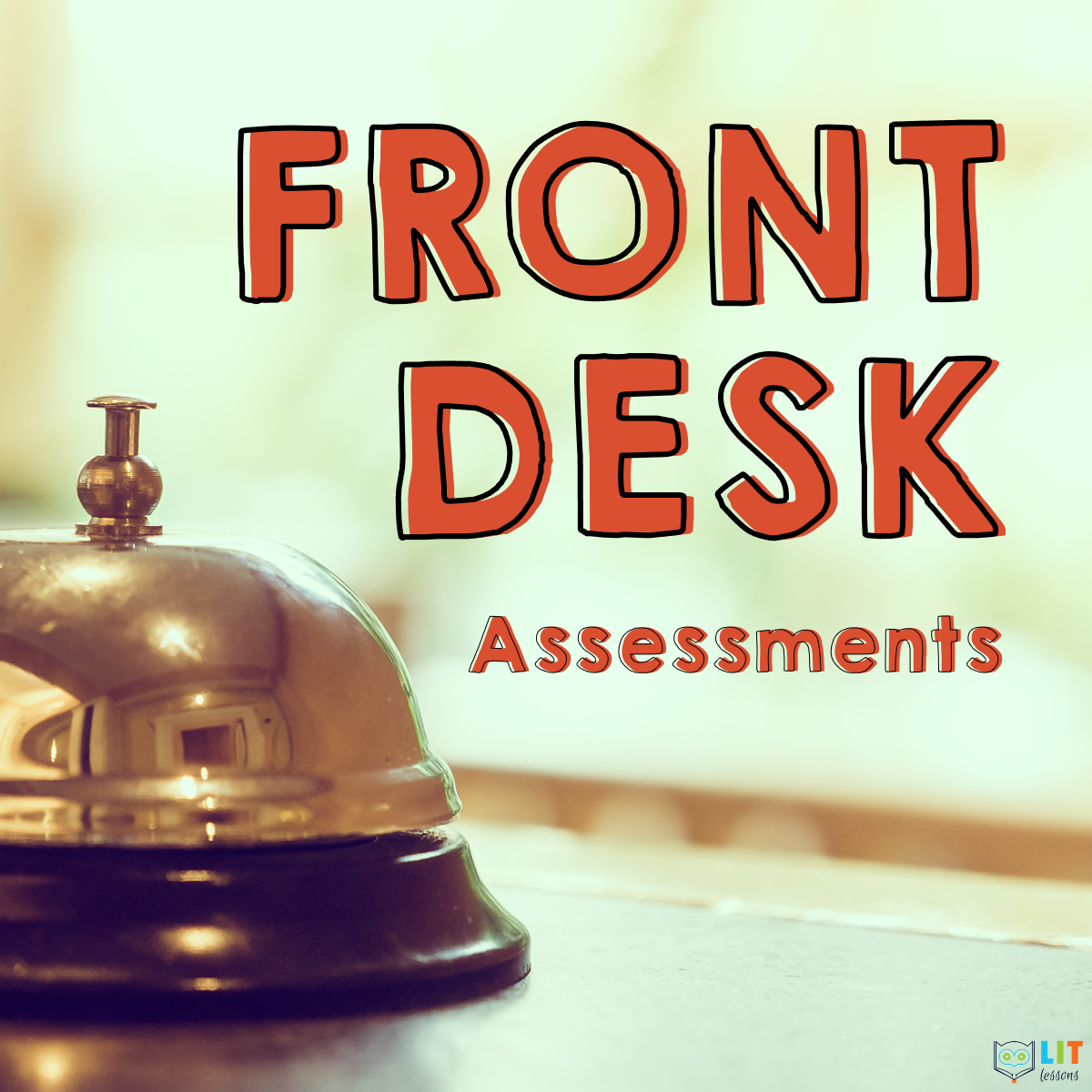
Front Desk Assessments
The standards-aligned assessments will help you measure your students’ comprehension of Front Desk and their ability to apply the literary skills taught throughout the unit. The materials include 23 reading checks, 3 novel quizzes, 1 final differentiated test, and an essay choice board.
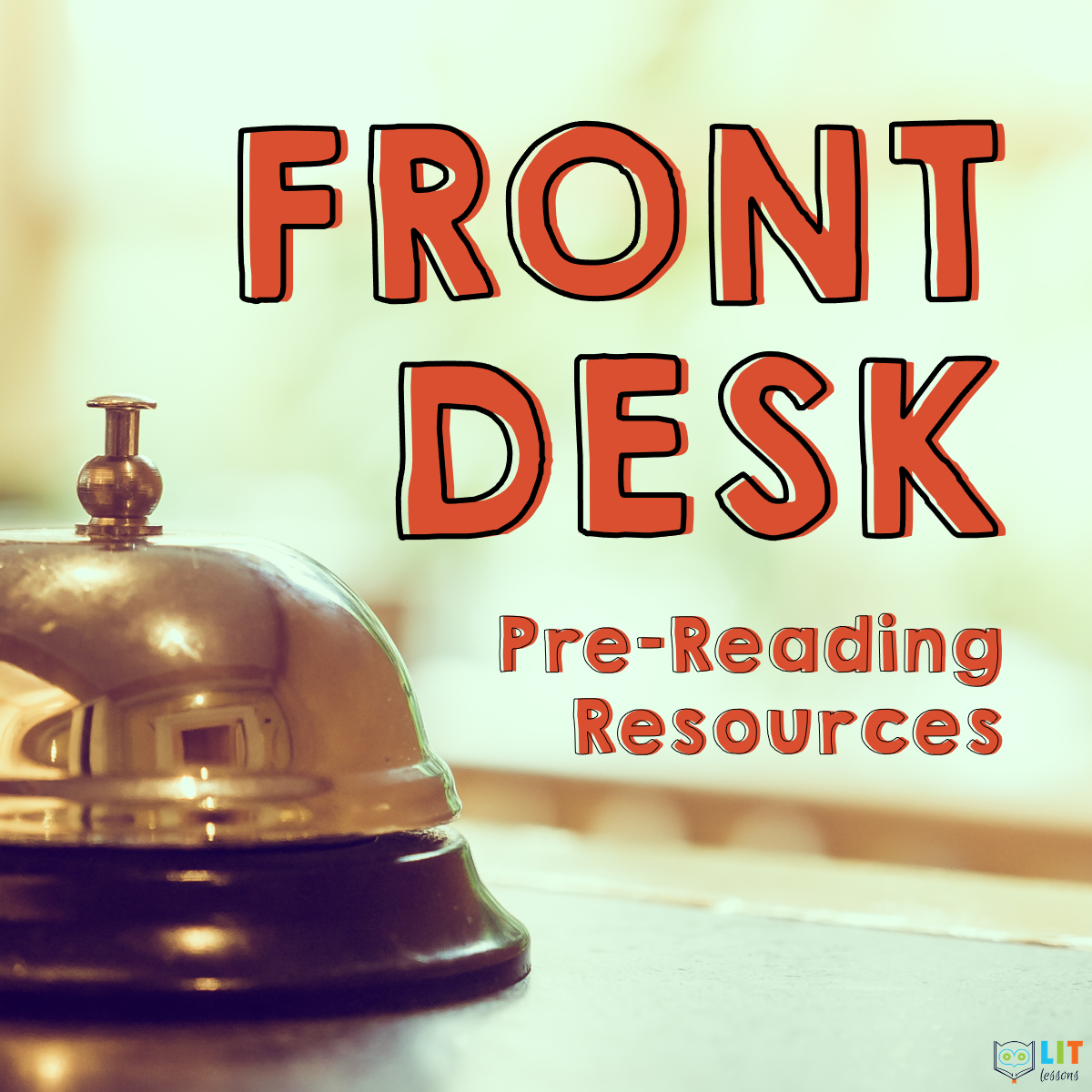
Front Desk Pre-Reading Resources
The Front Desk pre-reading resources will build your students’ understanding of the history of Chinese immigration to the United States, a topic that shapes the novel. By developing an understanding of this history, students will be able to engage with the themes of Front Desk in a thoughtful way. Instead of learning the characters’ experiences as isolated incidences, they will build their capacity to see these events on a continuum of history that continues to shape and influence society today. The resource includes 5 nonfiction readings, 3 activities, and an anticipation guide.

Front Desk Argumentative Writing Resources
The Front Desk writing resources teaches students argumentative writing through 14 mini-lessons, an essay assignment, and a final project. Each element of an argumentative essay is broken down and modeled before providing students the opportunity to draft their own example. With mini-lessons on thesis statements, topic sentences, conclusions and more, the resources provide a comprehensive resource for teaching this type of essay.
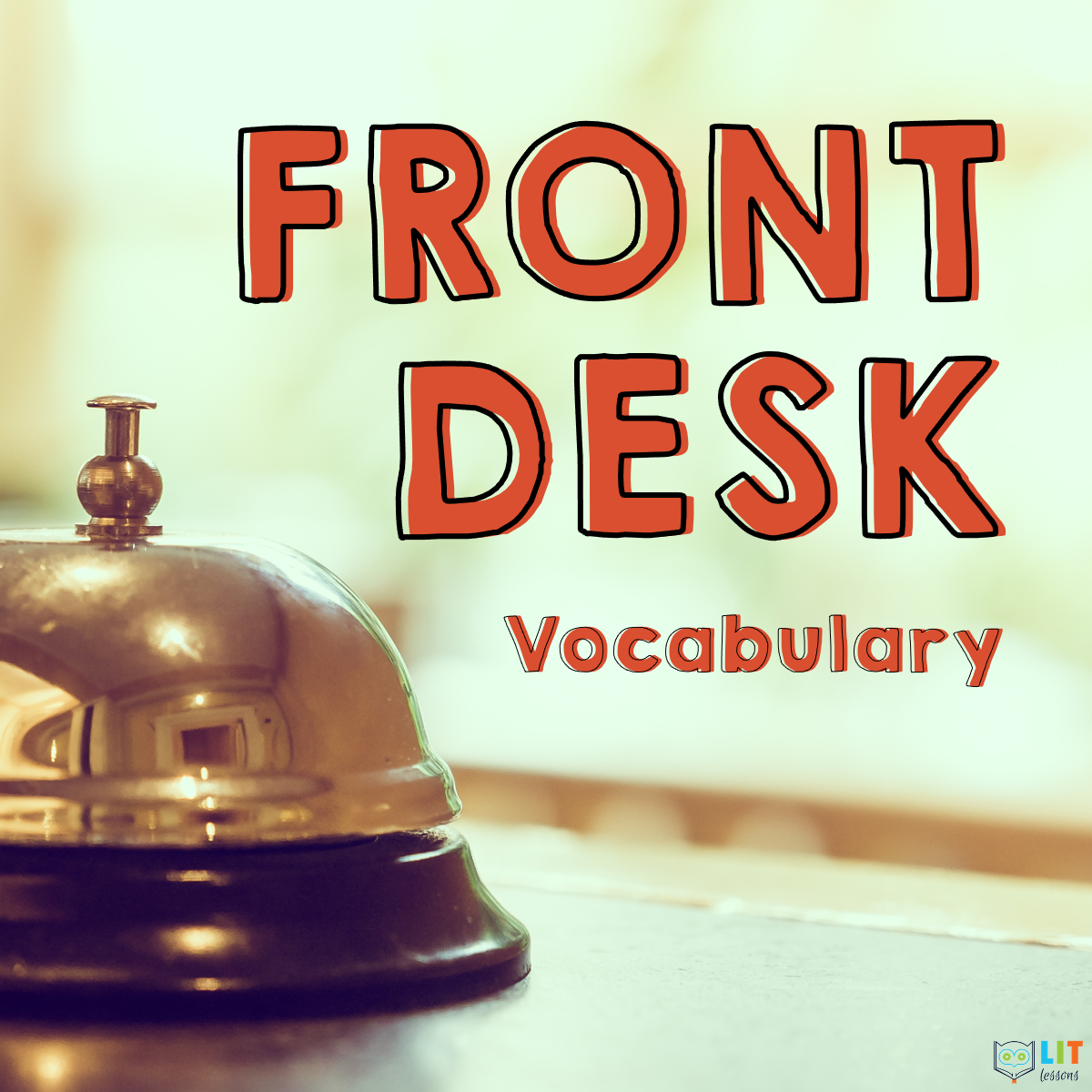
Front Desk Vocabulary
The vocabulary resources will engage students in varied activities to expand their vocabulary. The resources include materials to help teach challenging vocabulary words in Front Desk that will then build your students’ vocabulary. With 4 vocabulary lists of 10 words each and a crossword puzzle, practice assignment, and quiz for each set, the materials provide opportunities for differentiation to suit the needs of the classroom.

